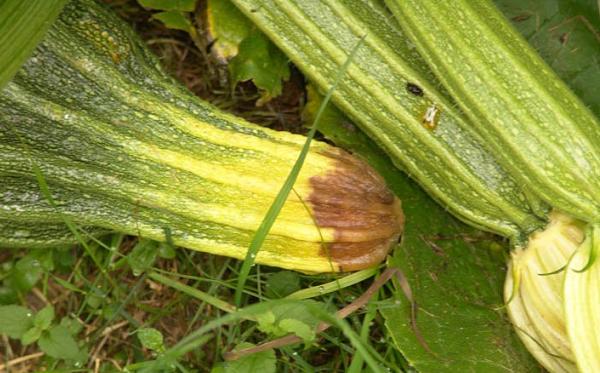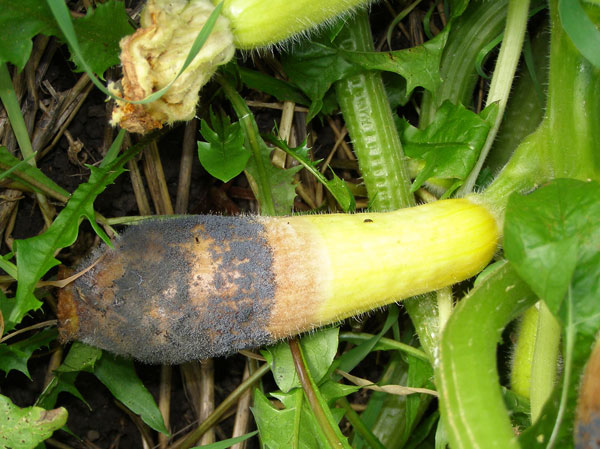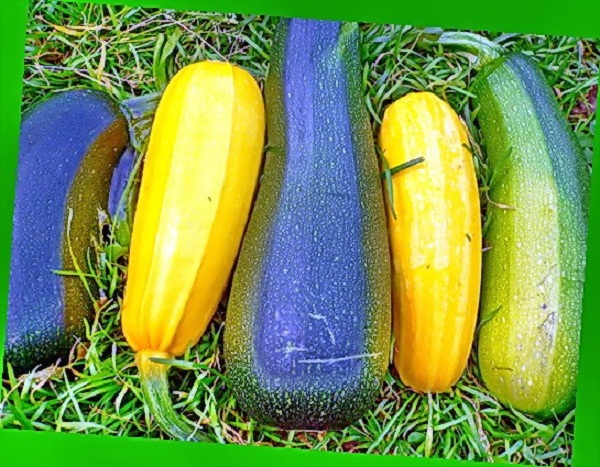Why zucchini turn yellow and rot: methods of struggle
Content
Causes of yellowing and methods of struggle
Often vegetable growers say that for some reason the leaves of zucchini turn yellow, sometimes they even rot, they worry that this is what leads to the dropping of the ovaries and, even more unpleasant, to rotting of the fruit. This does not always indicate illness, but it is certainly necessary to respond. In every plant, even an annual one, the growing season of which lasts only a few months, the first leaves have time to age. So the first leaves of zucchini grow large, and then the time comes when they just lie in the garden, touching the ground. They turn slightly yellow and dry out with age, and the fact that they touch the damp ground, of course, does not make them stronger.
From the beginning of growth, the plant consumes a lot of nitrogen, which is needed to build up green mass, with a sufficient amount, with proper abundant watering, large strong leaves grow. But over time, when flowering begins, and then the formation of fruits, the forces of the plant are redistributed, more nutrition goes to its new parts than to the old ones. This is how old leaves begin to turn yellow. They need to be removed - carefully cut with a sharp knife at the very stem. This will unload and thin out the bush, there should be air movement inside it, the ground under it also needs fresh air and sunlight, otherwise excess moisture will not evaporate.
If such leaves are not removed, they fall on the ground, there are pathogens and fungal spores in the soil, which will certainly take advantage of such a "bridge" between the ground and the plant to start acting. This should not be allowed. Old leaves should be cut in the morning of a sunny day as close to the stem as possible so that the sun dries the cut and it does not become a source of infection. Some owners treat the sections with disinfectants; you can simply make a weak solution of potassium permanganate or brilliant green.
Sometimes yellowing of the leaves indicates a lack of nutrients in the soil, then the plants should be urgently fed. During the period of intensive growth before flowering, the plant needs a lot of nitrogen, and later it needs more potassium, phosphorus, calcium. A highly diluted infusion of mullein or chicken droppings, complex mineral fertilizers, urea and ash are perfect. If the plant simply does not have enough moisture, you need to reconsider the watering regime.
Unlike cucumbers, which need to be watered often and little by little, squash needs a lot of water, but rarely. Once a week is enough for them, but so that the ground gets wet 30-40 cm deep. Water the zucchini with warm water so that they do not fall on the leaves. It is best to organize a shallow near-stem circle around the plant and pour water into it, and then cover it with loose earth, compost or humus.
If depressed spots appear on the leaves, if they do not brighten from green to yellow and further to dry, but become dark or become covered with a thin coating, there is reason to worry. Such signs may indicate fungal or bacterial diseases. It can be powdery mildew, spider mites, bacteriosis. In this case, you need to remove (cut off) all the affected parts - leaves, flowers, ovaries, and treat the remaining plant with special preparations. You can use "Topaz", "Ridomil" or others.
If the owners prefer to do without chemistry, you can prepare infusions of garlic, onion husks, celandine, stepchildren of tomatoes or potato tops. Lactic acid helps against fungal diseases, so the plants can be sprayed with diluted whey.
Video "What to do if zucchini start to turn yellow?"
Demonstrative video with examples of what diseased fruits look like, as well as tips on how to fix the problem.
Causes of decay and methods of struggle
If the ovaries and small fruits of the zucchini rot, this may indicate an excess of moisture or the plants are suffering from a drop in temperature. When growing zucchini in the open field, the weather can arrange unpleasant moments in the form of a cold rain that has charged for several days. This is very bad, but you can try installing a canopy over the zucchini or just placing umbrellas. Then, when the rain stops, it will be necessary to loosen the earth so that it dries out as soon as possible, remove the lower leaves that do not allow the sun to penetrate to the soil. In the greenhouse, of course, it is easier to arrange the desired heat and humidity regime for the zucchini, in which they are comfortable to grow and bear fruit. A dry solid material should be placed under the fruits that fall on the ground, which will exclude the touch of tender young zucchini to the damp ground, this can be tree bark, trim boards, plastic, non-woven fabric.
Ovaries and fruits can suffer from pests or diseases, then their decay is already a consequence of infection with bacteria, viruses or fungi. Some insect larvae, fungal spores, bacteria that infect related crops accumulate in the ground. Excessive humidity, temperature changes, watering with cold water can be a trigger for the onset of diseases. That is why it is so important to follow the rules of crop rotation and the basic requirements for caring for courgettes.
You can not plant zucchini for at least several years in the garden where pumpkins, cucumbers or squash used to grow. Good predecessors for them are tomatoes, onions, garlic, and cereals. Lack of iodine or boron in the soil can also cause rotting of the ovaries. If in your area there is a lack of iodine in people, then plants also lack it. At least once a season, you can spray on the ground with a solution of (0.002%) iodine. Boric acid is diluted in a proportion of 2 g - per 10 liters of water and sprayed with it on the plants.
If young zucchini begins to rot from the stalk, bacterial rot may be the cause. If, in addition to rot on the fruits, a white powdery coating is found on the leaves, then the plant is affected by fungal diseases. In any case, as soon as such signs are noticed, it is necessary to immediately remove all affected parts of the plant (it is better to destroy, not just remove), reduce watering, thin out the bush, and treat the entire plant with an appropriate agent. In all these cases, treatment with copper oxychloride will help.
You need to prepare a solution of 1 tablespoon of 50 percent copper oxychloride (or take the same amount of polycarbacin) in 10 liters of water. You can use special preparations "Zaslon", "Barrier", just study the instructions very carefully, pay attention to the timing of application and the timing of ripening of fruits. Traditional methods of dealing with diseases also work well.A decoction of ash, garlic, pharmacy chamomile is mixed with laundry soap and plants are treated with such a preparation, paying attention to the underside of the leaves. It must be said that harmful microorganisms in greater or lesser quantities are always present in the soil, but plants do not always suffer from them. In order not to get sick zucchini, in order to get a good harvest without hassle, you need to monitor the temperature and amount of water, the regularity of watering, avoid thickening of the plantings, thin out the bushes in time so that all parts of the plant are available to fresh air and sunlight.
Video "Secrets to Help Grow Healthy and Fertile Zucchini"
Informational video with helpful tips for growing squash.






